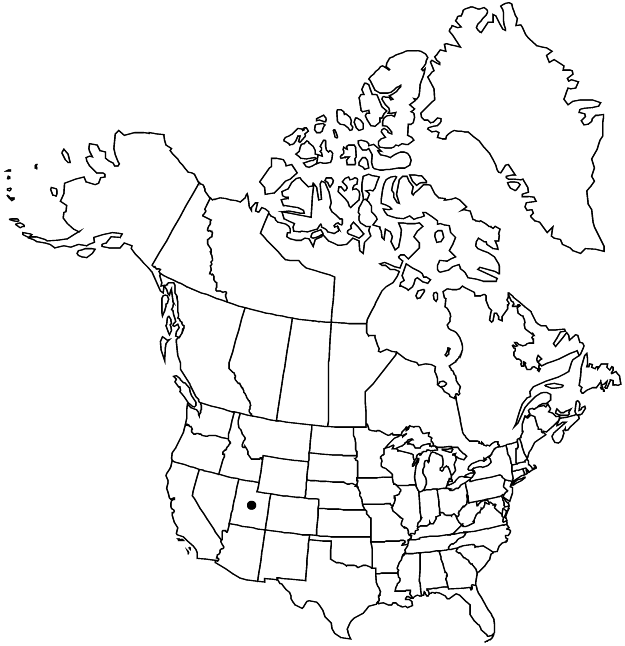Difference between revisions of "Polygonum utahense"
Bull. Univ. Utah, Biol. Ser. 4(4): 3, plate 1. 1940.
FNA>Volume Importer |
FNA>Volume Importer |
(No difference)
| |
Revision as of 23:32, 16 December 2019
Herbs. Stems erect, green, simple or with few branches, not wiry, 1.5–3.5 cm, papillose-scabridulous. Leaves uniformly distributed, articulated to ocreae, basal leaves persistent, distal leaves abruptly reduced to bracts; ocrea 2–3.5 mm, papillose-scabridulous, proximal part funnelform, distal part hyaline, lacerate; petiole absent; blade 1-veined, not pleated, linear-subulate, 6–14 × 1 mm, coriaceous, margins revolute, touching along midrib, apex acute, mucronate, papillose. Inflorescences axillary and terminal, spikelike, dense; cymes overlapping, starting almost from stem base, 2–4-flowered. Pedicels enclosed in ocreae, erect to spreading, 0.4–1 mm. Flowers open; perianth 2–2.5 mm; tube 20–25% of perianth length; tepals overlapping, uniformly white, petaloid, oblong to widely obovate, cucullate, navicular in distal 1/4, apex rounded; midveins branched; stamens 8. Achenes enclosed in perianth, black, elliptic, 1.5–2 mm, faces subequal, shiny, smooth.
Phenology: Flowering Jul–Sep.
Habitat: Dry, sandy ravines, rocky Navajo sandstone spur
Elevation: 2300 m
Discussion
Polygonum utahense has been treated as a synonym of P. sawatchense by some authors (e.g., S. L. Welsh et al. 1987; J. T. Kartesz and C. A. Meacham 1999). Its perianth morphology suggests a relationship with P. cascadense, from which it differs in its dwarf habit and uniformly papillose leaves with margins revolute, touching along midribs.
Selected References
None.
